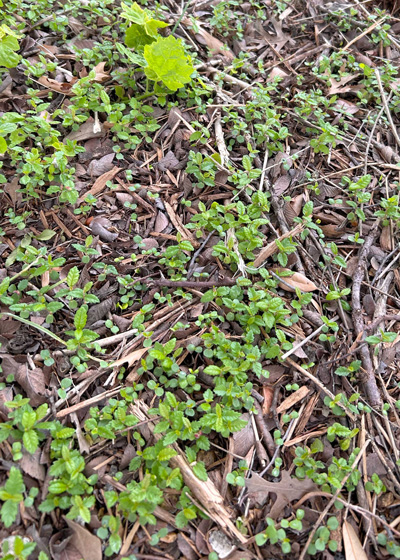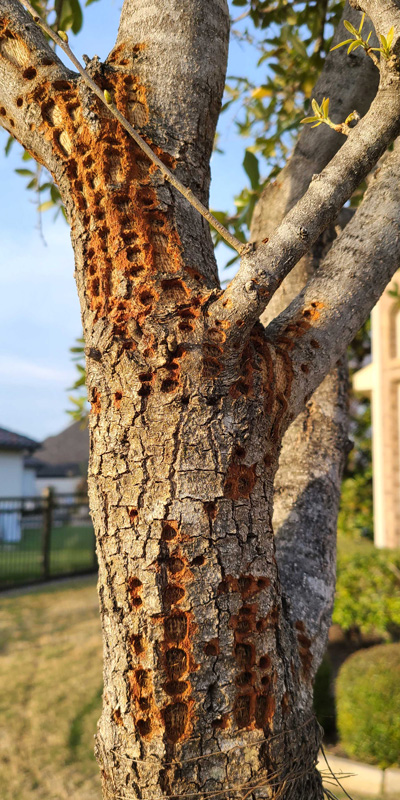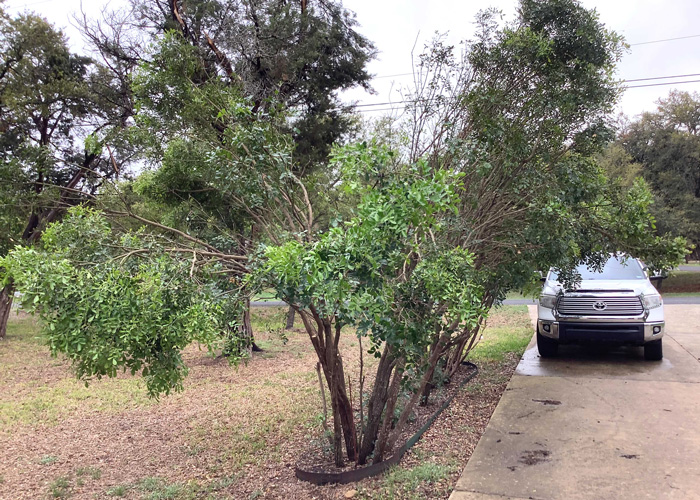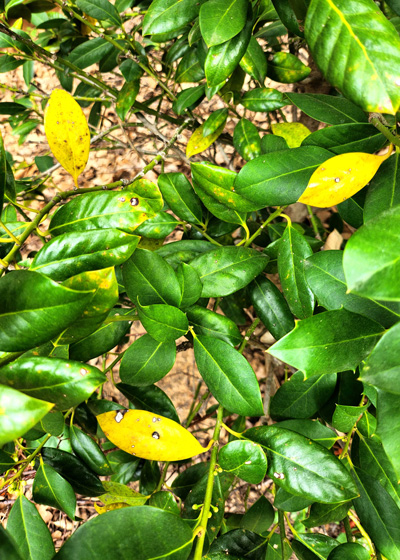Q&A – Ask Neil: March 30, 2023
(Please read these instructions carefully.)
Before you post your question, please look at recent issues to see if someone else has already asked it. You might find your answer there.
How to submit your question…
• Click the link provided below to post your question. After you submit your question, a new window will pop up giving you the address to which you can e-mail a photo to accompany your question. Clear, medium-resolution photos. (Try to avoid low-res thumbnail photos, please, in case I have to zoom in to see things.)
• Click here to post your question.
• Please only post your question one time.
• One question per reader, please.
• Please use this only for posting questions – not for standard emails.
• Watch for your answer in the following week’s e-gardens.
• I choose those of greatest general interest. For example, plant IDs seldom make the cut.
• I must have your first name or initials.
• I must have your city or county. (Texas is a very large state.)
QUESTION 1
IS IT HELPFUL TO PLANT MARIGOLDS AND ONIONS AS DETERRENTS FOR SQUIRRELS BESIDE TOMATOES?
Question: Squirrels have caused real problems with my tomatoes in the past two years. I have heard of using things like cayenne pepper to stop them. What is your opinion on the usefulness of planting marigolds and onions as deterrents? Cherryl M., Dallas.
Answer: I don’t think either would deter squirrels for one micro-moment. Plus, you’re too late to plant onions (by two months), and no plant I can think of would draw spider mites to the tomatoes any faster than marigolds. Your best bet would be to use some kind of tree netting secured over the large tomato cages. Granted, the squirrels might chew through it, but the mild challenge might be enough to discourage them. Frost cloth can actually be secured up the sides of your large cages and left in place well into the late spring as long as you leave the tops open so that heat can escape.
QUESTION 2
HOW CAN WE ELIMINATE CEDAR ELM SPROUTS IN OUR BEDS?
Question: Our flowerbeds are being overwhelmed by cedar elm seedlings unlike we’ve ever seen from our 5 trees. What can we do, short of pulling them by hand, to stop them? Would a layer of mulch smother them? David C., Justin, Denton County.

Answer: I sometimes have the same issue. I let my beds get slightly dry, then I sharpen my hoe and I scrape the surface of the soil and cover it with pine bark mulch. I rarely have any come back. You should have good success.
QUESTION 3
WHERE CAN I FIND THE FERTILIZER CALLED FOR BY MY SOIL TEST?
Question: I’m attaching the soil test from the A&M lab. It says I need nitrate and phosphorus. Where can I find a fertilizer containing just those two elements? Chia L., Little Elm.
Answer: It was difficult for me to read through the cross-hatching, but I live within 20 miles of you, so I’m familiar with the soils of the area. I would not worry nearly so much about the phosphorus as the nitrogen. Phosphorus accumulates in our soil, and it appears your soil already has a good bit of it. By comparison, nitrogen is what showed to be almost depleted. (Typical of our area.) Almost all of the lawn foods sold in the western 75 percent of Texas (outside the Piney Woods of East Texas) are all-nitrogen, with 30 to 40 percent of that nitrogen in coated or encapsulated, timed-release form. Your favorite local independent retail garden center will be able to show you several examples. I would recommend an inorganic type for highest analysis and most predictable results.
QUESTION 4
HOW SHOULD I ADDRESS WOODPECKER DAMAGE?
Question: My live oak has been attacked by a woodpecker. Will it survive? Should I apply some type of paste? How can I prevent it from happening again? Fred D., Frisco.

Answer: That’s an especially vicious attack. Usually, they’re not that concentrated. Seal the exposed wounds with pruning paint and then, if you see new wounds develop, apply Tree Tanglefoot to discourage the bird. It’s really messy and birds don’t like to get it on their feet. It won’t harm the bird. Hopefully the pesky thing will move on. I hope there is enough of the phloem tissue left intact for the tree to survive.
QUESTION 5
WHAT CAN I DO TO HELP MY SICKLY OAK? IT LOOKED BAD LAST SUMMER DURING THE DROUGHT, TOO.
Question: My oak has budded out on major branches, but not the smaller ones. It has also sprouted out on the trunk. It looked pretty sickly last summer during the drought as well. What should I be doing to help it? Rita M., Pilot Point.

Answer: It appears that you are in post oak country (Quercus stellata). There is a band of them running from the Red River, through your area and down through the Mid-Cities of the Metroplex. For one thing, having grown up with them around me in College Station, I can tell you that they are the most temperamental of all oak species I have known. That’s why you don’t see them grown and sold by Texas nursery dealers. I refer to them as “Flat Earth Society” trees. They go along merrily, then they go downhill and die almost without warning. And one final thought dates back to the extreme drought of 2011. We lost thousands of them due to a weakening fungus called Hypoxylon canker in the year or two following that drought. That could be the culprit here. I’ve hinted at several things, but I can’t identify it for certain just from photos. You might want to get a certified arborist out to look at it, although it looks very weak.
QUESTION 6
WILL MOWING ELIMINATE PISTACHIO AND CEDAR ELM SEEDLINGS?
Question: I have many Chinese pistachio and cedar elm seedlings coming up in my yard. Will frequent mowing get rid of them? Frank B., McKinney.

Answer: Easy answer. Yes. No other call to action.
QUESTION 7
WHAT CAN WE DO TO RESTORE OUR TEXAS MOUNTAIN LAURELS?
Question: This stand of Texas mountain laurels was hurt badly by this winter’s ice storm. After cutting out the broken and dead limbs this is what we have left. Where do we go from here? Mark M., North Bexar County (San Antonio area)


Answer: That is just awful damage. Not just to the mountain laurels, but to your lovely live oaks as well. It looks like you’ve addressed the broken branches well. In the case of the mountain laurels, you need to remove a good bit more of the healthy growth to take weight off their trunks. Your goal should be to get them back to nearly vertical. They will branch freely this growing season, and soon you won’t be able to tell that any of this ever happened. Do this pruning soon, though. You don’t want to waste any of the new growth.
QUESTION 8
WHAT IS WRONG WITH MY NELLIE R. STEVENS HOLLY AND ITS YELLOW LEAVES?
Question: We planted a Nellie R. Stevens holly two years ago. Today I noticed yellow leaves with spots on them. What is it, and what do I use to treat it? Rhonda S., Denton.

Answer: I think you’re going to like my answer. Those are last year’s leaves in the process of being shed. It will happen every year at this time, and it’s no cause for concern. In fact, since you sent your photos six days ago it may very well have become more pronounced (temporarily). Have no fear. Your plant will soon look spectacular with its new leaves for 2023. However, it looks like the plant could use an application of nitrogen lawn fertilizer if you haven’t given it one already.

